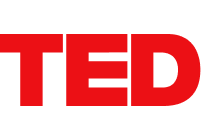The paradox at the heart of mathematics: Gödel's Incompleteness Theorem - Marcus du Sautoy
3,880,277 Views
3,519 Questions Answered
Let’s Begin…
Consider the following sentence: “This statement is false.” Is that true? If so, that would make the statement false. But if it’s false, then the statement is true. This sentence creates an unsolvable paradox; if it’s not true and it’s not false– what is it? This question led a logician to a discovery that would change mathematics forever. Marcus du Sautoy digs into Gödel’s Incompleteness Theorem.
Create and share a new lesson based on this one.
About TED-Ed Animations
TED-Ed Animations feature the words and ideas of educators brought to life by professional animators. Are you an educator or animator interested in creating a TED-Ed Animation? Nominate yourself here »
Meet The Creators
- Educator Marcus du Sautoy
- Director BASA
- Narrator Addison Anderson
- Storyboard Artist Piruleta Ortiz
- Lead Animator Piruleta Ortiz
- Animator Daniela Espinosa
- Compositor Eduardo Moya
- Art Director Diego Huacuja
- Music Igor Figueroa , Mono
- Sound Designer Igor Figueroa, Mono
- Director of Production Gerta Xhelo
- Editorial Director Alex Rosenthal
- Producer Bethany Cutmore-Scott
- Editorial Producer Dan Kwartler
- Production Coordinator Abdallah Ewis
- Script Editor Eden Girma
- Fact-Checker Jennifer Nam






